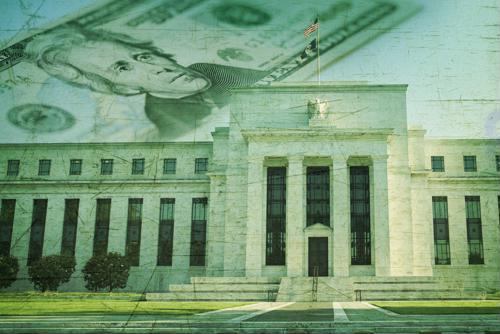
In its sixth meeting of the year, the Federal Open Market Committee voted to reduce its federal funds rate by a quarter percentage point to between 1.75 and 2%. The decision was the second-straight rate cut implemented by the Fed., The last reduction in July was the first since December 2008, but the vote among policy-makers hinted at a growing divide in outlook and action.
The interest rate cut of 25 basis points was largely expected by the market, but was not a guarantee after the Fed said in July that its intention was not to start a series of cuts. Yet global pressures and trade factors have led it to reduce the rate to insulate the U.S. economy from slowdowns seen worldwide. While the Fed did go ahead with a rate cut in September after is two-day meeting, it didn’t give any other solid indications that another rate cut was in the making this year.
Instead, the main takeaway was the lack of consensus among policy-makers. Three dissent votes were lodged, with two regional Fed presidents voting to hold the rate steady, while another wanted to lower the rate to between 1.5 and 1.75, a half-point reduction. But the near future holds much uncertainty for Chairman Jerome H. Powell as he looks to steer monetary policy amid global risks. According to MarketWatch, the dot plot of Fed predictions for further 2019 rate cuts was largely divergent: seven officials said there’d be one more reduction, five said there wouldn’t.
No promise on further cuts, but door always open
In the July press conference announcing the rate cut, Chairman Powell said it was not the FOMC’s intention to engage in a string of successive cuts, but would do so if conditions warranted. After lowering the rate in very next meeting, Powell held that position.
“If the economy does turn down, then a more extensive sequence of rate cuts will be appropriate,” he said during his post-meeting news conference, according to CNBC. “We don’t see that. It’s not what we expect.”
The impetus for September’s rate cut was much like July’s: While the U.S. economy remained strong, despite some weaker-than-expected data in late summer, the global economy struggled with deeper issues. A week before the September Fed meeting, the European Central Bank lowered its key rate into negative range, while also announcing a massive bond-buying program to stimulate the Eurozone area. A slowdown in China along with raised trade tensions has exerted further pressure on the global economy.
The news of the Fed rate cut is important for consumers. The federal funds rate serves as the prime rate for many mortgages and other types of loans. That means mortgage interest rates could trend lower, generating more homebuying activity. If you have an adjustable-rate mortgage, your interest rate could adjust lower next time it is rebalanced, while those in a fixed-rate mortgage might consider refinancing to take advantage of historically low rates.
If you’re looking for a mortgage or want to refinance, talk to a Mortgage Banker about how low rates might impact the process. To do that, contact The Federal Savings Bank today.
This information is intended for educational purposes only. Products and interest rates subject to change without notice. Loan products are subject to credit approval and include terms and conditions, fees and other costs. Terms and conditions may apply. Property insurance is required on all loans secured by property. VA loan products are subject to VA eligibility requirements. Adjustable Rate Mortgage (ARM) interest rates and monthly payment are subject to adjustment. Upon submission of a full application, a mortgage banker will review and provide you with the terms, conditions, disclosures, and additional details on the interest rates that apply to your individual situation.


